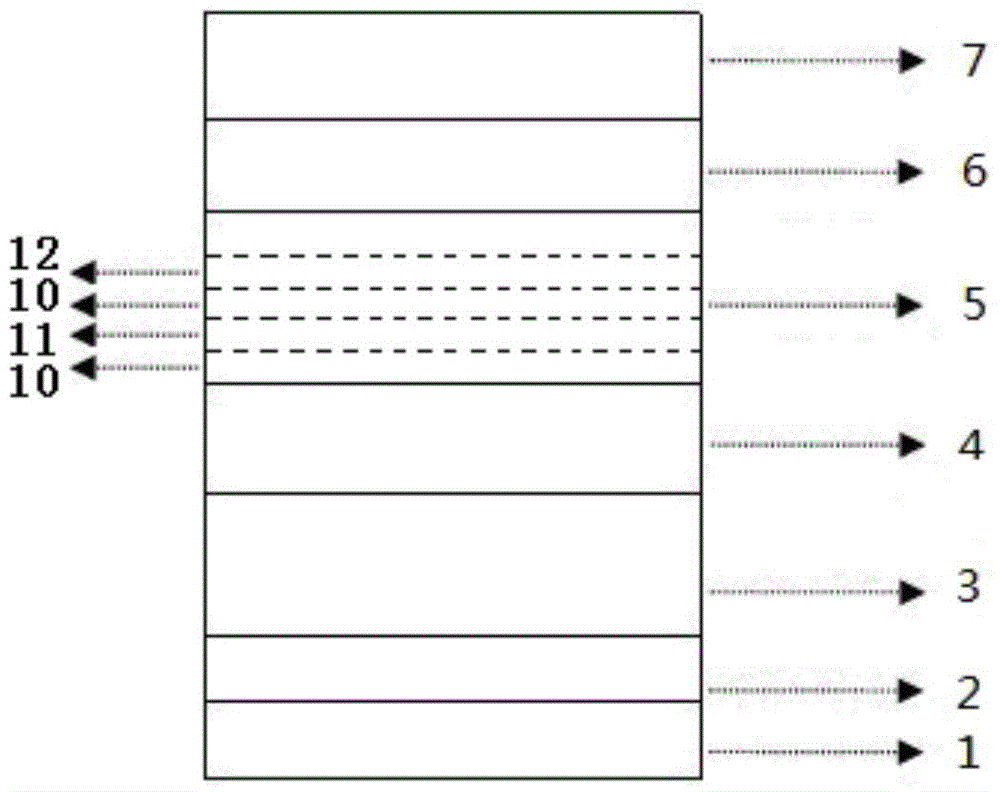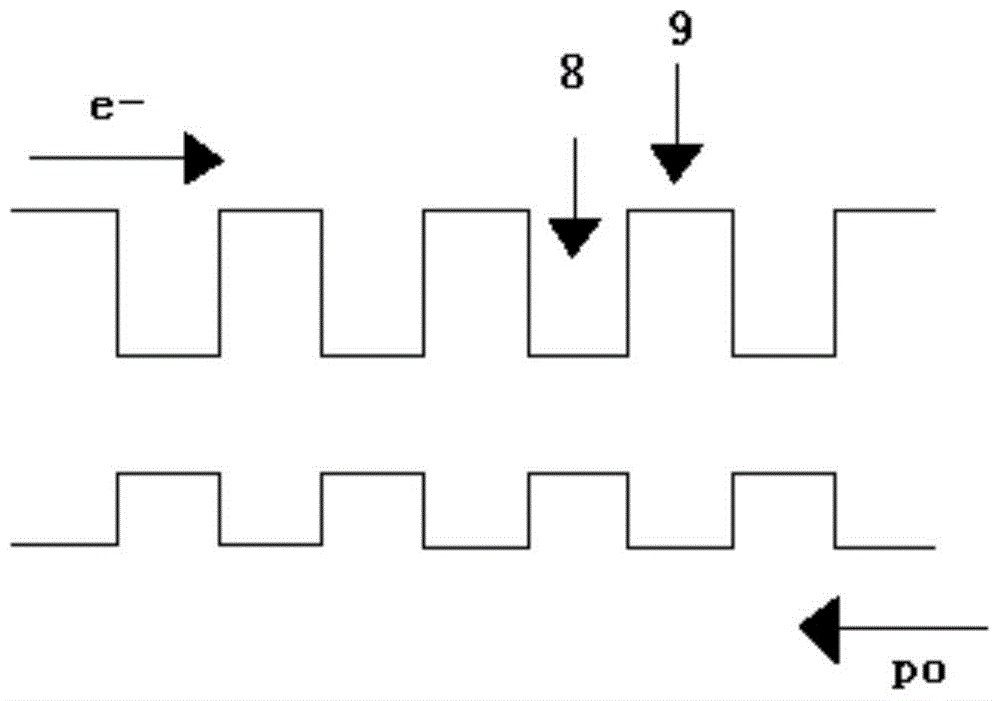LED epitaxial layer growth method and LED epitaxial layer for increasing luminous efficiency
A growth method and luminous efficiency technology, applied in electrical components, circuits, semiconductor devices, etc., can solve the problems of easy leakage of electrons, hole consumption, and low injection efficiency, and achieve the effects of increasing luminous efficiency, increasing concentration, and improving injection
- Summary
- Abstract
- Description
- Claims
- Application Information
AI Technical Summary
Problems solved by technology
Method used
Image
Examples
Embodiment 1
[0048] see figure 2 , the present invention uses Aixtron MOCVD to grow high-brightness GaN-based LED epitaxial wafers. Using high-purity H 2 or high purity N 2 or high purity H 2 and high purity N 2 The mixed gas as the carrier gas, high-purity NH 3 As the N source, the metal-organic source trimethylgallium (TMGa), triethylgallium (TEGa) is used as the gallium source, trimethylindium (TMIn) is used as the indium source, and the N-type dopant is silane (SiH 4 ), trimethylaluminum (TMAl) as the aluminum source, and the P-type dopant as magnesium dicene (CP 2 Mg), the substrate is (0001) sapphire, and the reaction pressure is between 100mbar and 800mbar.
[0049] A LED epitaxial layer growth method for increasing luminous efficiency, which sequentially includes processing a substrate, growing a low-temperature buffer GaN layer, growing a non-doped GaN layer, growing a Si-doped GaN layer, growing an active layer MQW, growing a P-type AlGaN layer, growing P-type GaN layer s...
PUM
 Login to View More
Login to View More Abstract
Description
Claims
Application Information
 Login to View More
Login to View More - R&D Engineer
- R&D Manager
- IP Professional
- Industry Leading Data Capabilities
- Powerful AI technology
- Patent DNA Extraction
Browse by: Latest US Patents, China's latest patents, Technical Efficacy Thesaurus, Application Domain, Technology Topic, Popular Technical Reports.
© 2024 PatSnap. All rights reserved.Legal|Privacy policy|Modern Slavery Act Transparency Statement|Sitemap|About US| Contact US: help@patsnap.com










